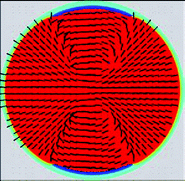This paper presents an overview of the capillary modeling science of nematic liquid crystals and its applications to the stability, structure, and shape of films, membranes, fibers, and drops. Liquid crystals are anisotropic viscoelastic materials possessing long range orientational order, and hence these models are relevant to the capillary science of anisotropic soft matter. A systematic multiscale approach is used to derive the equations that govern the shape of interfaces and contact lines. These shape equations generalize the surface Laplace and the contact line Neuman equations by introducing long range orientational order, gradient elasticity, surfactant adsorbants, magnetic and electric fields. The thermodynamics of capillary systems is used to reveal novel cross-effects such as adsorption-driven shape changes of surfaces and contact lines. The capillary models are used to analyze the structure and stability of films, membranes, fibers, and drops, of direct relevance to the processing and performance of structural and functional liquid crystals. Novel soft materials and mechanisms analyzed in this paper include: (1) stabilization of freely-suspended nematic films by orientation and molecular order heterogeneities, (2) orientational defects in polymer dispersed liquid crystals films, shown to originate from surface anchoring transitions, (3) electric field-induced curvature in membranes for sensor and actuator applications, (4) new helical morphologies of thin nematic filaments driven by strong interfacial anchoring, (5) tunable partial wetting through contact angle modification via gradient and anchoring elasticity, (6) liquid crystal nanoemulsion shape control through anchoring effects, and (7) magnetic shaping in liquid crystal colloids. Readily accessible applications to biological liquid crystal materials and processes indicate that capillary modeling science will be a most active area of research in the very near future.


 Please wait while we load your content...
Please wait while we load your content...